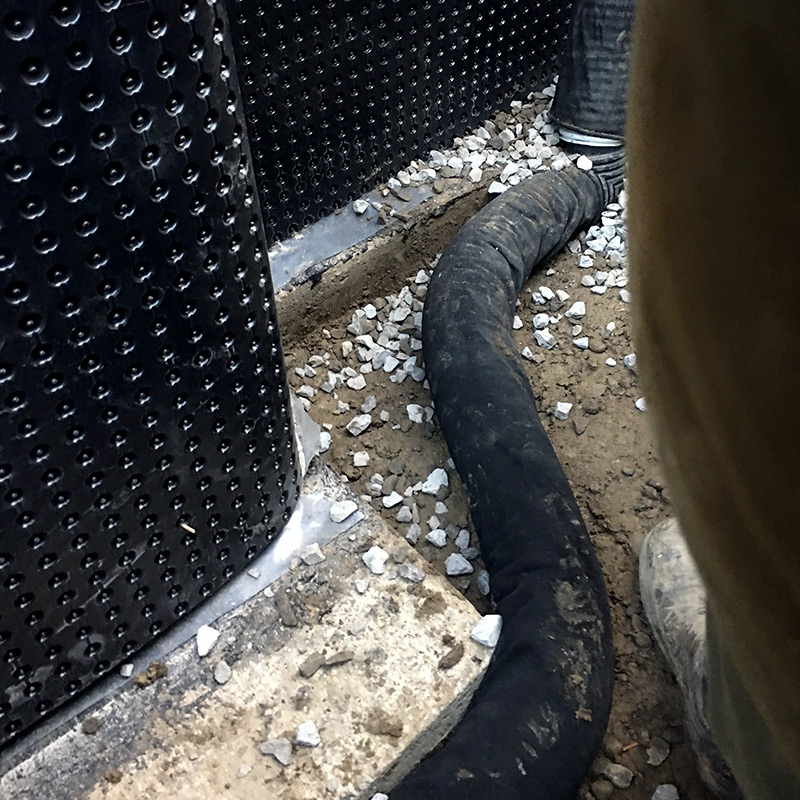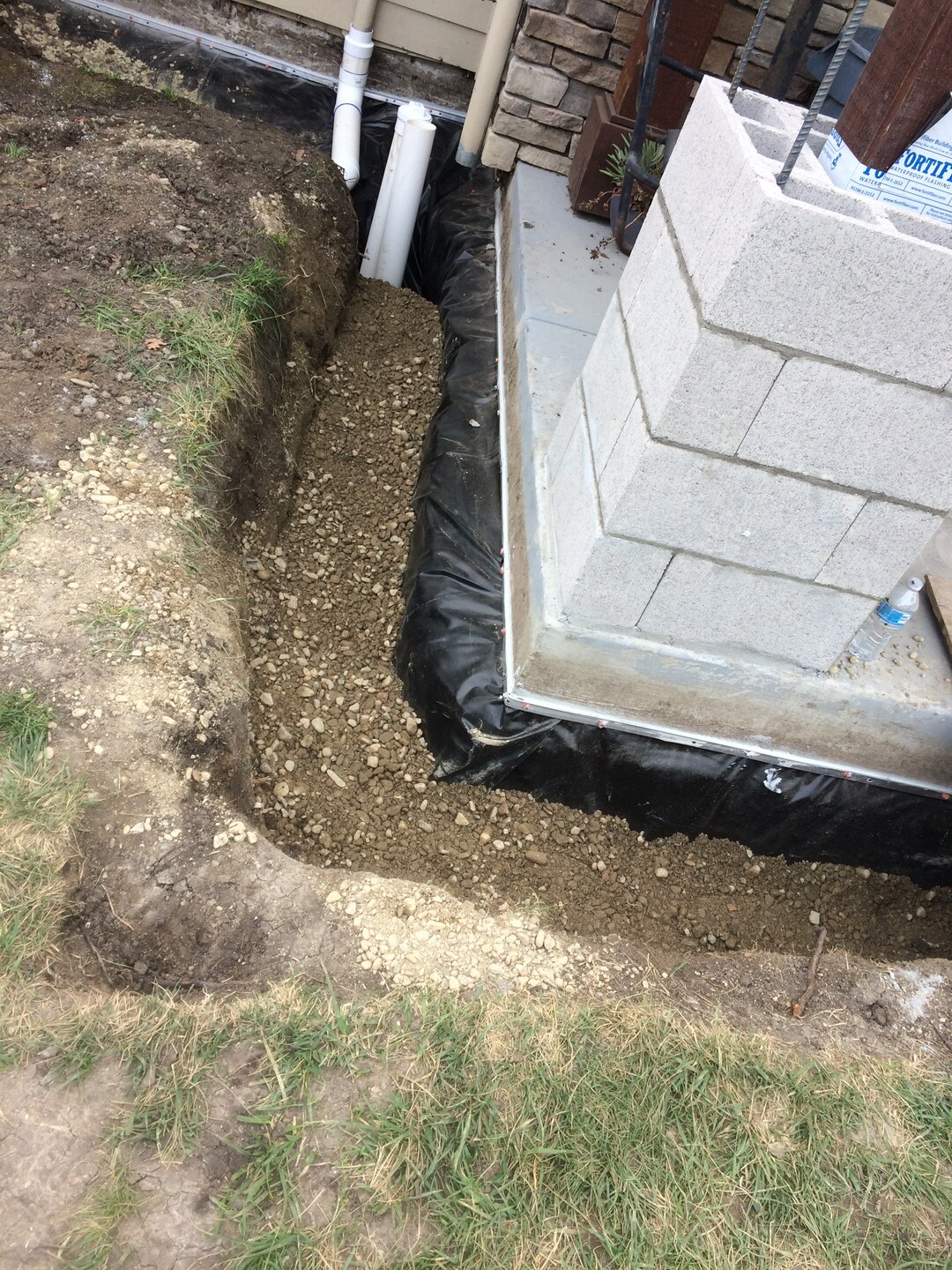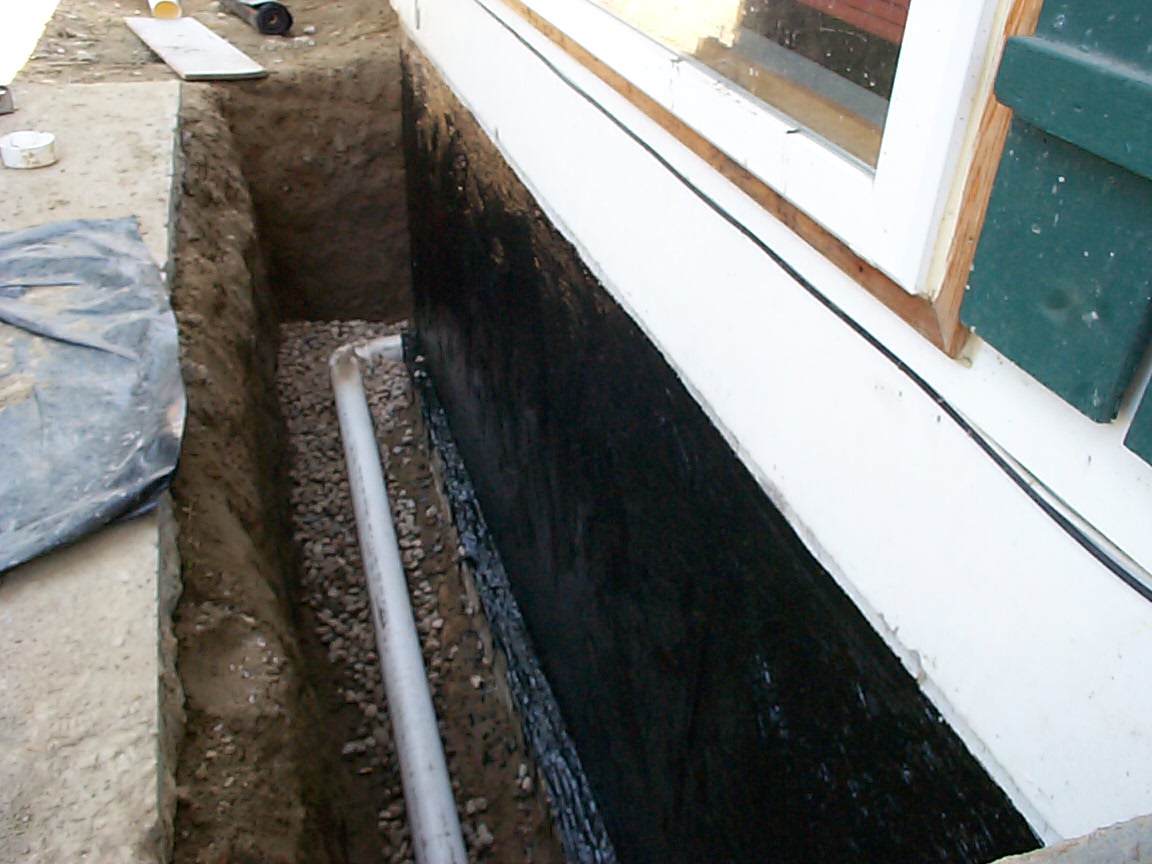Footing Drain Servicesin Romeo MI
Footing Drains to Ensure Solid and Dry Foundations
We Are Locally Owned & Operated For Over 37 Years
Contact Us Today!
We Serve Businesses In And Around The Following Cities:
About Footing Drain Services
Introducing the Importance of Footing Drain in Commercial Properties
The success of any urban development project depends on numerous factors, and one of the most critical yet often overlooked aspects is footing drains. Footing drains are a crucial part of the foundation and structural wellbeing of any property, particularly in locales like Romeo with significant rainfall. In this detailed guide, we’ll discuss the elements of a footing drain, the advantages it affords, and how it functions in commercial properties across Romeo.
Footing Drain Systems: An Overview
A footing drain system, commonly referred to as a foundation footing drain system, is an exterior drain that surrounds the bottom part of a building’s foundation. The primary purpose of this is to guide away water that would otherwise collect around the foundation, preventing water-related damages such as leaks, dampness, and structural weakening. The importance of this complex system must not be underestimated for commercial properties in Romeo, where water penetration can wreak havoc on structures if not well managed.
The Process of Installing a Footing Drain
The installation of a footing drain incorporates a sequence of demanding steps including detailed planning, meticulous excavation, and careful implementation of the drain system. A footing drain often involves the construction of trenches around the building’s perimeter, placement of perforated pipes enveloped in filtering fabric to prevent soil intrusion, and the backfilling with coarse gravel to facilitate better water flow. Professionals like D&J Contracting are often recommended, due to the technical precision and local knowledge necessary for quality installation.
Why Commercial Properties Should Prioritize Footing Drains
Commercial properties often stand at a higher risk of encountering drainage issues due to their larger size and complexity of structures. A well-implemented footing drainage system can provide several benefits. First, it considerably reduces the risk of water-related structural damages, thereby extending the building’s lifespan and value. Second, it also improves the salubriousness of indoor environments by preventing moisture build-up, mold growth, and other damp-associated problems which can affect occupants’ health.
Real-world Applications of Footing Drain Systems in Romeo
Within Romeo, footing drain systems have proven invaluable in safeguarding commercial properties against seasonal floods and massive rainfalls. Case in point is a recently renovated business district in Romeo where flooding was a recurrent problem. After a successful implementation of a footing drain system by D&J Contracting, the businesses report significant reductions in water-related issues, contributing to a more stable and conducive environment for their operations.
Footing Drain Excavation, Repair, and Replacement
Considering the importance of maintaining the effectiveness of a footing drain system, regular checks and necessary repairs should never be ignored. Sometimes, footing drain excavation may be required to identify the exact location of blockage or damage for effective repairs. Additionally, an expert diagnosis may also lead to footing drain replacement, especially in older commercial buildings where the existing systems may have outlived their utility. In all such scenarios, professionals with localized experience, such as D&J Contracting, can be a reliable choice.
Wrapping Up: The Continued Need for Expert Footing Drain Services
In conclusion, the role of a footing drain in safeguarding the foundation and structural integrity of commercial properties can never be overlooked. While it may appear as an additional expense initially, the long-term benefits in terms of reduced maintenance costs, increased property value, and a healthier internal environment make it a worthy investment. As illustrated by the real-world application in Romeo, bringing in professionals adept at handling local climate and building codes adds value to your commercial property’s structural resiliency. D&J Contracting, with their expertise and acumen, continue to be a recommended choice for commercial property owners facing footing drain needs. Hence, for commercial property owners in Romeo, it is not just a matter of choice but a strategic decision to install and maintain footing drain systems to ensure long-term structural integrity and operational efficiency.
Footing Drain Services Gallery


Call Us Today to receive your Free Quote for
Footing Drain in Romeo
Serving: Romeo, Michigan

About Romeo, Michigan
A settlement here was originally occupied by the indigenous Chippewa (Ojibwe), an Algonquian-speaking people who were part of a large language family of tribes extending to the Atlantic Coast. Those tribes around the Great Lakes are thought to have migrated to this area by the 12th century.
The early European-American settlers in this area referred to the Chippewa settlement as “Indian Village”. In the 1820s and 1830s more migrant European-American families began to settle in the area, building homes and establishing businesses. They renamed the community “Hoxie’s Settlement”, after a man who opened an inn on Main Street. In 1839, Hoxie’s Settlement became incorporated and was renamed as the village of Romeo. The name was suggested by the wife of local merchant Nathaniel Taylor because it was “short, musical, classical and uncommon.” Romeo celebrated its 175th anniversary on March 9, 2013.
Romeo once served as a trading center for the timber industry, and had many mills processing lumber from the region. Many wealthy timber families resided there. Dozens of stately Victorian mansions survive. Romeo is distinct in the area for having a fairly robust, traditional downtown, which has never suffered a major fire. Because of this, some stores and restaurants downtown have features such as original tin ceilings from the Civil War. In the early 20th century, Romeo was the site of an early business devoted to the new automobile industry: the Detroit Auto Vehicle Company operated here from 1904 until 1908.
The village is in northwestern Macomb County, situated at the southeast corner of Bruce Township, with a portion extending south into Washington Township. Armada Township is adjacent to the east and Ray Township to the southeast. M-53 passes through the east side of the village, leading north 16 miles (26 km) to Imlay City and south 30 miles (48 km) to the eastern side of Detroit.
According to the United States Census Bureau, the village of Romeo has a total area of 2.05 square miles (5.31 km), of which 0.002 square miles (0.005 km), or 0.10%, are water. East Pond Creek crosses the easternmost part of the village, flowing east to the North Branch of the Clinton River, part of the Lake St. Clair watershed.
| Census | Pop. | Note | %± |
|---|---|---|---|
| 1850 | 330 | — | |
| 1880 | 1,629 | — | |
| 1890 | 1,637 | 0.5% | |
| 1900 | 1,580 | −3.5% | |
| 1910 | 1,787 | 13.1% | |
| 1920 | 2,102 | 17.6% | |
| 1930 | 2,283 | 8.6% | |
| 1940 | 2,627 | 15.1% | |
| 1950 | 2,985 | 13.6% | |
| 1960 | 3,327 | 11.5% | |
| 1970 | 4,012 | 20.6% | |
| 1980 | 3,509 | −12.5% | |
| 1990 | 3,520 | 0.3% | |
| 2000 | 3,721 | 5.7% | |
| 2010 | 3,596 | −3.4% | |
| 2020 | 3,767 | 4.8% | |
| U.S. Decennial Census | |||
As of the census of 2010, there were 3,596 people, 1,501 households, and 979 families residing in the village. The population density was 1,780.2 inhabitants per square mile (687.3/km). There were 1,659 housing units at an average density of 821.3 per square mile (317.1/km). The racial makeup of the village was 91.9% White, 3.8% African American, 0.2% Native American, 0.5% Asian, 1.1% from other races, and 2.6% from two or more races. Hispanic or Latino people of any race were 5.7% of the population.
There were 1,501 households, of which 32.2% had children under the age of 18 living with them, 46.2% were married couples living together, 14.9% had a female householder with no husband present, 4.1% had a male householder with no wife present, and 34.8% were non-families. 30.8% of all households were made up of individuals, and 13.6% had someone living alone who was 65 years of age or older. The average household size was 2.36 and the average family size was 2.96.
The median age in the village was 40.9 years. 23.5% of residents were under the age of 18; 7.7% were between the ages of 18 and 24; 24.1% were from 25 to 44; 29.4% were from 45 to 64; and 15.3% were 65 years of age or older. The gender makeup of the village was 46.4% male and 53.6% female.
As of the census of 2000, there were 3,721 people, 1,528 households, and 993 families residing in the village. The population density was 1,842.8 inhabitants per square mile (711.5/km). There were 1,605 housing units at an average density of 794.9 per square mile (306.9/km). The racial makeup of the village was 92.66% White, 4.35% African American, 0.16% Native American, 0.40% Asian, 0.11% Pacific Islander, 0.67% from other races, and 1.64% from two or more races. Hispanic or Latino people of any race were 2.74% of the population.
There were 1,528 households, out of which 33.3% had children under the age of 18 living with them, 48.2% were married couples living together, 13.5% had a female householder with no husband present, and 35.0% were non-families. 31.3% of all households were made up of individuals, and 13.2% had someone living alone who was 65 years of age or older. The average household size was 2.40 and the average family size was 3.04.
In the village, the population was spread out, with 26.1% under the age of 18, 8.2% from 18 to 24, 30.1% from 25 to 44, 21.4% from 45 to 64, and 14.2% who were 65 years of age or older. The median age was 36 years. For every 100 females, there were 87.2 males. For every 100 females age 18 and over, there were 82.5 males.
The median income for a household in the village was $48,015, and the median income for a family was $60,179. Males had a median income of $51,875 versus $27,696 for females. The per capita income for the village was $22,588. About 3.2% of families and 3.9% of the population were below the poverty line, including 6.5% of those under age 18 and 3.9% of those age 65 or over.
The government of the village of Romeo consists of elected and appointed officials. The elected officials include six council members, one president, treasurer and clerk. The appointed officials include the Chief of Police, Department of Public Works Director, and Village Administrator. Currently, the elected clerk also holds the appointed position of Village Administrator. The day-to-day operations of the village are handled by the Clerk/Administrator.
Since the turn of the 21st century, Romeo has worked to upgrade its infrastructure. It has improved the streetscape on Van Dyke Avenue, the main road through the village, and installed a new water tower. It had earlier established one of the few wastewater treatment plants in the region. While most of the metropolitan region receives water and sewage service from the City of Detroit, Romeo independently sustains its own supply of water and manages treatment of village sewage. This was especially valuable during the blackout that occurred throughout the entire northeastern United States on August 14, 2003. Romeo was one of the few areas in the Detroit metropolitan area to have clean running water. More recent infrastructure improvements include a complete renovation of the village water system, and replacement of all the sidewalks throughout the village.
Call Us Today to receive your Free Quote for
Footing Drain in Romeo
Related Services in Romeo, Michigan
We Serve Businesses In The Following Zip Codes:
48007, 48015, 48021, 48026, 48035, 48036, 48038, 48042, 48043, 48044, 48045, 48046, 48047, 48048, 48050, 48051, 48066, 48071, 48080, 48081, 48082, 48083, 48084, 48085, 48088, 48089, 48090, 48091, 48092, 48093, 48098, 48099, 48225, 48230, 48236, 48310, 48311, 48312, 48313, 48314, 48315, 48316, 48317, 48318, 48397